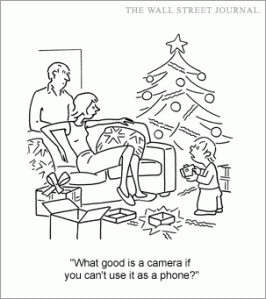One questions that begs an answer is “how do you measure sleep”…? Can you really measure one’s fatigue and sleep level?
Sleep is generally analyzed using an ensemble of instruments called polysomnography(PSG). The ensemble consists of electro-encephalography (EEG) to measure the brain activity, electro-oculography (EOG) to measure and monitor eye movements and an electro-myography (EMG) to measure muscle tone of the subject under supervision to determine the sleep stage.
Sleep is broadly divided into REM (rapid eye movement) and NREM (non rapid eye movement). The NREM sleep is divided into four levels with level 1 starting with the onset of sleep to higher levels of sleepiness. The features appear in blocks.
The definition of sleep stages are made traditionally with respect to the EEG patterns and the important features found in the EEG signal of each sleep stage is given below. The stages of interest here are ‘Stage-W’ and ‘Stage-N1’ since this is the stage where the subject goes from wakefulness to sleep, meaning drowsy state. It must be observed that these classifications are for that of stages of sleep. The sleepiness or drowsiness is found between ‘Stage-W’ and ‘Stage-N1’.
Each of the stage of sleep is defined by features that might be found in EEG recording. For instance stage one is signaled by the rising of theta activity and the fading of alpha activity. Stage two is characterized by the theta activity and the presence of sleep spindles, which occur due to the interaction between cortex and the thalamus. Stages 3 and 4 contain slow waves and delta waves. The difference between stages is determined by the feature composition of an epoch.
The definitions of sleep stages are based upon the EEG data that is obtained. The data is visually scored by dividing the data into epochs of specific time duration. The visual scoring has some disadvantages. First of which is the accuracy of the score since small variations in frequency cannot be easily spotted along with the fact of it being tedious.
|
Sleep stage |
Description |
Observed EEG pattern |
| Stage W | Wakefullness | Alpha waves (8-13 Hz) |
| Stage N1 | NREM 1 sleep | Theta waves (4-7 Hz) |
| Stage N2 | NREM 2 sleep | Sleep spindles (11 to 16 Hz) and K-complexes |
| Stage N3 | NREM 3 sleep | Slow wave sleep- delta waves (typically 0.5-2 Hz) |
| Stage R | REM sleep | Rapid eye movements and low level EEG voltages |
Table – Sleep stages classification and observed features
The definitions of sleep stages have been clearly addressed. But in the context of the current studies the emphasis is on the transition from stage 0 to 1 where the subject moves from wakefulness to sleep. The general standard testing methodologies are multiple sleep latency test and maintenance of wakefulness test. In multiple sleep latency test (MSLT) the latency between the start of the sleeping period to the initial signs of sleep is measured and the latency is used as a diagnostic value.
The maintenance of wakefulness test is similar to MSLT except that here a subject’s ability to stay awake rather than a subject’s tendency to fall asleep. Here again, the test is conducted using the ensemble of instruments called a polysomnograph (PSG). The problem with the above tests is the discrete nature of the results.
There are other scales of analyzing PSG data to classify sleep stages such as Karolinska Drowsiness Scale(KDS). There are also subjective scales of analysis of sleep stages such as Stanford Sleepiness Scale (SSS), Visual-Analog Scale (VAS) that use a scale of explained parameters where the measurement is generally introspective.
There are also other ways to measure onset of sleep such as standard deviation of lateral position of the vehicle during driving and also an ensemble of data such as speed variability, steering position along with lateral position are used to estimate the sleep stage. This parameter can be easily measured in simulator tests but can be difficult to measure in case of roads due to limitations imposed by sensor capabilities.
One other credible indicator of sleepiness is blink characteristic, especially blink duration and blink velocity. The eye blink duration especially has shown to have a very good correlation with the sleepiness level. There is sufficient data that indicates that blink duration, especially, to be a good indicator of sleepiness and show a direction link between Karolinska Sleepiness Scale(KSS) and blink duration. Thus blink characteristics when studied in relation with other known indicators of sleep would lead to efficient markers for sleep stage classification.



 This convergence will definitely bring targeted research better results. It all burns down to the recipe…!!!
This convergence will definitely bring targeted research better results. It all burns down to the recipe…!!!